Fanatic (1965)
Directed by: Silvio Narizzano
Written by: Anne Blaisdell, Richard Matheson
Starring: Maurice Kaufmann, Peter Vaughan, Stephanie Powers, Tallulah Bankhead
AKA DIE! DIE! MY DARLING
UK
AVAILABLE ON DVD
RUNNING TIME: 96 min
REVIEWED BY: Dr Lenera, Official HCF Critic
American Patricia Carroll lost her fiancée Stephen several years ago but now has a new one, Alan Glentower, and has come to London to marry him. However, her strong sense of proper etiquette, plus her desire to bring closure to an unhappy memory, demand she make a first time/last time courtesy call on Mrs. Trefoile, Stephen’s mother. Ignoring Alan’s strong objections, she drives out to Mrs. Trefoile’s secluded house, and finds herself in a strange household where Mrs. Trefoile, a religious fanatic, rules over her three servants with Bible-reading sessions and un-flavoured oatmeal for breakfast, lunch, and dinner. She agrees to stay the night, but when she tries to leave, she finds that she’s been locked in her room….
There was a strange cycle of films during the 1960’s, initiated by What Ever Happened To Baby Jane?, which cast aging female stars as murderous psychopaths, and Fanatic was the first of three pictures Hammer made to get into the act. Though made in colour unlike the studio’s earlier suspense thrillers, it doesn’t feel very much like a Hammer film, perhaps partly because it was made by what was largely a different crew to normal. In fact, it feels more like an American independent cheapie from the 70’s. Set mostly in one house, it seems to be aiming for a claustrophobic effect which doesn’t quite come off, while also opting more for a blackly comic feel, which can work in the right hands but, again, doesn’t entirely work here, with not much attempt made to frighten at the same time, despite Tallulah Bankhead’s astonishingly venomous performance, playing a character who’s an even loonier religious mother than Carrie’s. The somewhat slender plot [though considered to be another in the cycle of Hammer thrillers begun by Taste Of Fear, there are only a couple of mild twists] still maintains interest, and it’s all good, slightly perverse fun that could have been a minor classic of dark comedy if better handled, as the material’s certainly there.
It was based on a novel called Nightmare by Anne Blaisdell, but the title was changed because Hammer had not long released a film of that title, and was originally to star Flora Robson until Bankhead became interested, causing debut director Silvio Narizzano to add Mrs. Trefoile having once been an actress to Richard Matheson’s script. Bankhead was furious when she found pictures of her younger self being used on set. Bankhead, a Broadway star who only occasionally appeared in movies [most notably in Alfred Hitchcock’s Lifeboat], was an alcoholic at the time. Producer Roy Skeggs visited the set and saw her drinking tea and sent a note to Hammer head James Carreras that said: “Problem over, she’s drinking tea”. A couple of hours later she fell over and Skeggs sent another note that read: “Sorry, Scotch in the tea”. Bankhead put up her salary for the film as a guarantee she’d finish if she wouldn’t be replaced. It took nearly a whole day for her to loop the line of dialogue “You must die! Die, my darling”, due to drink, something which in 2013 became the subject of a play called Looped which starred, after an initial stint with Valerie Harper, Stephanie Powers – who played Patricia in the film. Bankhead nearly knocked Powers out with a slap and the press fabricated rivalry between the two. Shot at Elstree Studios – Bray beginning to be used less now because of union difficulties and a fire causing Hammer head James Carreras to try to sell it, resulting in a deal with ABPC where Hammer could only use it when there was no room at Elstree – and nearby Letchmore Heath in Hertfordshire, Fanatic was re-titled Die! Die! My Darling for its US release, which prompted Bankhead to sue the American distributors Columbia Pictures. It was moderately well received.
The credit are nicely odd, with a green bathed cat in pursuit of a pink bathed mouse, though the title music seems too jaunty despite some sinister bits here and there. Now it’s not entirely convincing that Patricia feels this great desire to visit the mother of her fiancée, a woman she’s never met before, several years after his death, though it’s even more unconvincing that, once at her house, she doesn’t do a runner within a few minutes. The servants seem creepy and one of the first things Mrs. Trefoile does is to ask her is if she’s a virgin. There are Bible readings which take hours, oatmeal is the only food, there are no mirrors in the house, and Mrs. Trefoile seems like a complete lunatic. We see her talk to her dead son Stephen, and I feel that the film makes a mistake in, every now and again, showing events that are not from Patricia’s point of view. The uncomfortable tension would have been considerably stronger if they hadn’t done this, and I don’t think that it would have jarred with the final scene which doesn’t involve Patricia at all. Even when we learn why the servants are remaining in the house despite their loopy mistress, this information could have been divulged, say, by Patricia over-hearing it. Still, it does mean that we get to enjoy more of the off kilter performances from Peter Vaughn as Harry, who lusts after Patricia, and Yootha Joyce as Anna, who I initially thought was going to be a lesbian with affections for Mrs. Trefoile and/or Patricia but is actually Harry’s wife, plus a very young Donald Sutherland as another servant with considerable learning difficulties. It’s a simplistic performance with no subtlety whatsoever that would probably be considered offensive by some if the film came out today, but I couldn’t stop chuckling at his constant gurning.
Once Mrs. Trefoile orders Patricia to wash off her lipstick, she takes her to church but is only there for a couple of minutes until the priest appears, a man who disgusts Mrs. Trefoile because he remarried. Patricia finally decides to get away, but of course with no luck. Her various attempts to escape don’t quite have the edge that they should have but it’s probable that the filmmakers were more after dark laughs anyway. Eventually the violence does begin, with a shooting in the mouth and a scissors death that seems obviously modeled after the one in Hitchcock’s Dial M For Murder, though unsurprisingly Psycho is a major inspiration [the thought of a Psycho film from the point of view of Mrs. Bates is exciting], with even a swinging light in the cellar! Alan ends up reappearing in the story, though I couldn’t work out whether he’d seen a glaring bit of evidence which would have told him that Patricia was at Mrs. Trefoile’s house [which seems more likely, but it could have been made clearer], or whether he just decided to rush to the house anyway. At least Mrs. Trefoile gets a tremendous death scene, Bankhead really hamming it up, but it suits the character. And, in a nice touch, who actually killed her is left unexplained.
Matheson’s script is solid, though could have done with another draft to strengthen certain aspects. Parts of it are rather funny though, like Patricia having tummy burps during Bible reciting. The moment sounds out of place but doesn’t seem so much that way when you hear it in the film. Also chucklesome, though in a slightly different way, is a bit when Mrs. Trefoile gives Patricia bowl of oatmeal and the bowl is clearly empty. There’s not really enough creepy atmosphere in this film and the house could have been more impressive but I think that much of the weakness [comparatively – it’s still a perfectly decent watch – it just could have been rather more] is down to the mostly mediocre direction of Narizzano [who went on to brief fame with Georgy Girl] , who even resorts to clumsy ‘shakycam’ in the poorly staged [with one exception] fight scenes [I guess some would say that it makes the film seem more modern but in that case I’d hardly say that’s a good thing], though he does, oddly, give us the odd interestingly done and effective moment, notably a confrontation scene introduced with extreme close-ups. Cinematographer Arthur Ibbetson also gives us some bold lighting in the cellar scenes, especially when he bathes Mrs. Trefoile in green [what is it with Hammer films and green?– several different cinematographers on the studio’s films have emphasised that particular colour] so she looks like the Wicked Witch of the West.
It’s Bankhead who provides the film with what edge it has, even if she mumbles some of her lines and I couldn’t switch on subtitles to understand them as my DVD didn’t have any. Powers is quite likeable and appropriately measured, though her English accent virtually goes after a few minutes, and she was never much of an actress really, even later on in her career. The score by Wilfred Josephs, which makes much use of the harpsichord, is all over the place, sometimes tense, sometimes humorous, sometimes appearing when it isn’t needed but also sometimes absent when it may have helped. It’s almost as if he just dropped the cues randomly throughout the film. It really seems that many of the people involved with Fanatic weren’t always working in tandem with each other, instead each being involved with their own separate movie. But it has flashes of inspiration throughout, certainly keeps one watching, and is pretty funny, which means that overall it’s still definitely worth a look.

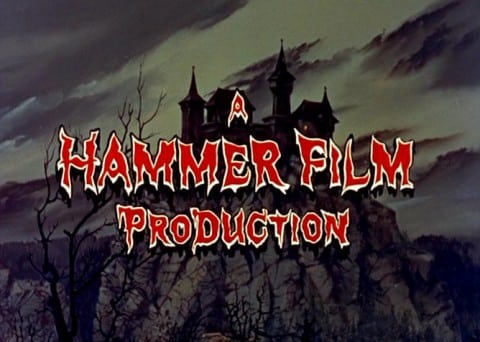
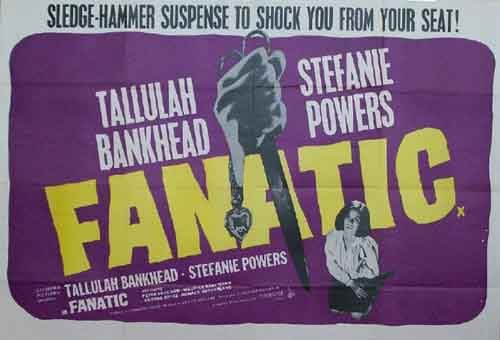
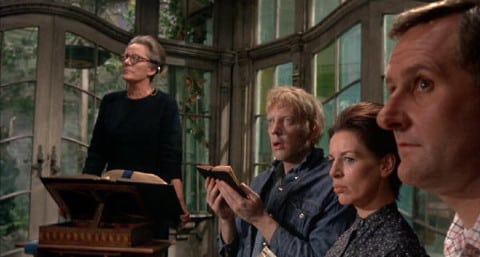
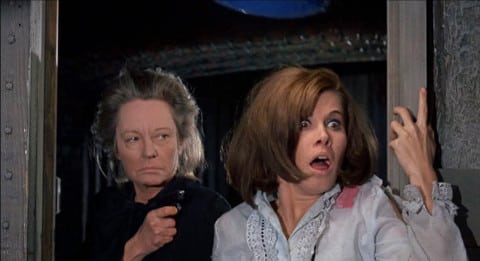



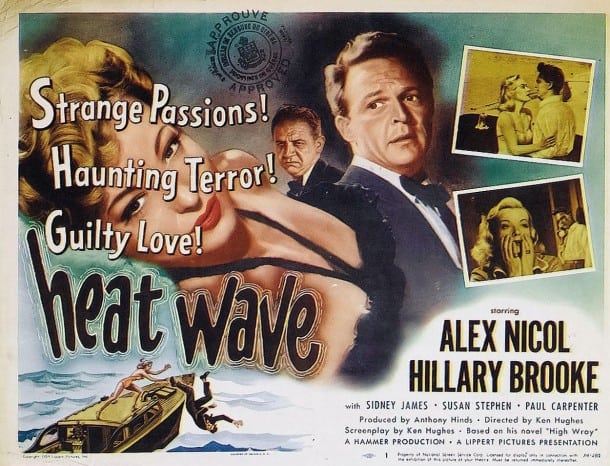
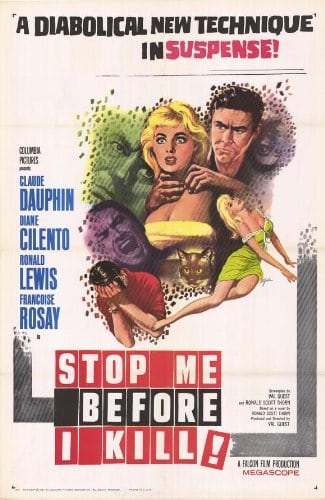
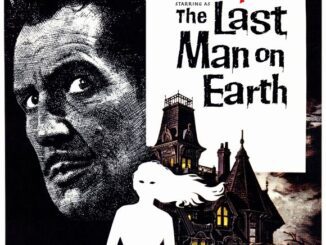
Be the first to comment